With all the chat about de-budding, there are questions about the
different irons and tips available. Who among us has not heard about the Rhinehart when we first started learning about de-budding. So, what types of irons are there and what is the difference between them? Which tips should be used for our
Kinders? What is the difference between a Rhinehart X30 or Rhinehart X50A?
different irons and tips available. Who among us has not heard about the Rhinehart when we first started learning about de-budding. So, what types of irons are there and what is the difference between them? Which tips should be used for our
Kinders? What is the difference between a Rhinehart X30 or Rhinehart X50A?
Irons.........
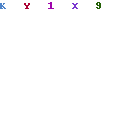
Electric Calf Dehorning Iron.
This iron has the appearance of a heating element. The center diameter is an inch. This iron heats up quickly, taking about 10 minutes. Because there is an open area at the bottom of the coil, the iron has to be turned to complete coverage. This tip has been used on a two week old Kinder buck, who ended up (after two more de-buddings) to have surgery to remove the horns that grew. This iron is TOO BIG for Kinder bucklings. The burn area is very large and extremely uncomfortable for a young one. The recovery time is weeks due to the severity of the burn, etc.
This iron has the appearance of a heating element. The center diameter is an inch. This iron heats up quickly, taking about 10 minutes. Because there is an open area at the bottom of the coil, the iron has to be turned to complete coverage. This tip has been used on a two week old Kinder buck, who ended up (after two more de-buddings) to have surgery to remove the horns that grew. This iron is TOO BIG for Kinder bucklings. The burn area is very large and extremely uncomfortable for a young one. The recovery time is weeks due to the severity of the burn, etc.
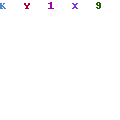
Non-Electric Iron. This iron must be heated by a separate heat source, such as a butane torch or fire. Due to the external heat source, care must be taken to ensure the iron is hot enough with
each use. The iron averages 12" long. Can be easily made by any
handy person. Tips on the commercial models being sold run about 3/4" in diameter and cost around $20. Care must be taken to assure that the iron is hot enough for the de-budding. Tips with openings 3/4" may be too large for Kinder bucklings. We know of one herd owner that is very happy with their non-electric iron.
each use. The iron averages 12" long. Can be easily made by any
handy person. Tips on the commercial models being sold run about 3/4" in diameter and cost around $20. Care must be taken to assure that the iron is hot enough for the de-budding. Tips with openings 3/4" may be too large for Kinder bucklings. We know of one herd owner that is very happy with their non-electric iron.
 Rhinehart X30 with tip
Rhinehart X30 with tip Rhinehart X30 dehorner.
More affordable than the Rhinehart X50 (average cost $75), this iron comes with a permanently attached tip.
You can order it with your choice of a 1/4" or 3/8" tip through the manufacturer or 1/4" or 1/2" tip permanently attached through Hoegger. This iron has a 200 watt element and
maintains a steady 900-950 degree temperatures. Care must be taken that the tip is hot enough to 'do the job'. Manufacturer strongly recommends never using the iron for more than 5 seconds at a time when de-budding. This is why many use the iron twice on each side to maximize the de-budding and avoid severe injury to their animals.
More affordable than the Rhinehart X50 (average cost $75), this iron comes with a permanently attached tip.
You can order it with your choice of a 1/4" or 3/8" tip through the manufacturer or 1/4" or 1/2" tip permanently attached through Hoegger. This iron has a 200 watt element and
maintains a steady 900-950 degree temperatures. Care must be taken that the tip is hot enough to 'do the job'. Manufacturer strongly recommends never using the iron for more than 5 seconds at a time when de-budding. This is why many use the iron twice on each side to maximize the de-budding and avoid severe injury to their animals.
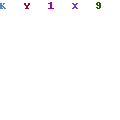 Rhinehart X50A without a tip
Rhinehart X50A without a tip Rhinehart X50A Dehorner. Around $20 more expensive than the
Rhinehart X30, this iron was made for multiple de-budding jobs.
Capable of higher heat up to 1000 degrees, this 239 watt iron automatically reheats when the temperature reaches 800 degrees.
The advantage of this iron is that the tips are not permanently
attached. Any tip can be used with this iron, from the 1/4" to 3/4" tip. It can even be used without a tip, providing a large enough copper end to dehorn calves. Manufacturer strongly recommends never using the iron for more than 5 seconds at a time when
de-budding. Our experience, we do two burnings per horn bud, keeping a timer to assure you don't go over the 5 second time limit. Using this method, you burn one side 5 seconds, repeat on the other side. Go back and repeat the process for an additional 3-5 seconds. Let the weight of the iron do its job, rock the iron around the horn bud for an even burn.
Rhinehart X30, this iron was made for multiple de-budding jobs.
Capable of higher heat up to 1000 degrees, this 239 watt iron automatically reheats when the temperature reaches 800 degrees.
The advantage of this iron is that the tips are not permanently
attached. Any tip can be used with this iron, from the 1/4" to 3/4" tip. It can even be used without a tip, providing a large enough copper end to dehorn calves. Manufacturer strongly recommends never using the iron for more than 5 seconds at a time when
de-budding. Our experience, we do two burnings per horn bud, keeping a timer to assure you don't go over the 5 second time limit. Using this method, you burn one side 5 seconds, repeat on the other side. Go back and repeat the process for an additional 3-5 seconds. Let the weight of the iron do its job, rock the iron around the horn bud for an even burn.
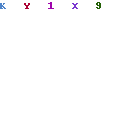
Portable Butane Disbudding Iron. These irons are convenient, allowing de-budding to be done at any
location. Pre-Heating usually takes about 4 minutes. Some models have adjustable temperatures up to 1100 degrees.
location. Pre-Heating usually takes about 4 minutes. Some models have adjustable temperatures up to 1100 degrees.
Tips
You've probably heard about the different tip sizes, but really, what tip should you use? Let's talk about sizes, because with Kinders sizes due matter!
1/4" Pygmy/Nigerian Tip. This is a very small tip. We personally don't have any experience with it, but can tell you that on most mini-goat sites, NO ONE likes this tip. Pygmy owners that we have talked to would never recommend or use this small tip.
1/2" Small/Regular Goat Tip. That's exactly what it is, a goat tip. We have used this tip many times. With does, we have had very good luck. With bucks, well not so lucky. Again, timing is
everything! If you wait too long to do a de-budding, then be prepared to re-do your de-buddings. The older and bigger your goats get, the more uncomfortable it is for them and the harder it is to successfully do a de-budding.
1/4" Pygmy/Nigerian Tip. This is a very small tip. We personally don't have any experience with it, but can tell you that on most mini-goat sites, NO ONE likes this tip. Pygmy owners that we have talked to would never recommend or use this small tip.
1/2" Small/Regular Goat Tip. That's exactly what it is, a goat tip. We have used this tip many times. With does, we have had very good luck. With bucks, well not so lucky. Again, timing is
everything! If you wait too long to do a de-budding, then be prepared to re-do your de-buddings. The older and bigger your goats get, the more uncomfortable it is for them and the harder it is to successfully do a de-budding.
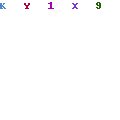 1/2" small/reg tip vs. buck tip
1/2" small/reg tip vs. buck tip Buck Tip. 1 1/4" long, tear drop shaped, with a 1/2" wide opening. The Buck Tip is designed to manage the larger horn bases all bucks have. Our personal experience with this is: Use only on larger bucks that need a second de-budding. Place the
wider base right in front of the horn bud with the narrow tip facing towards the tail. Use the same 5 second rule provided by the manufacturer on the Rhinehart models.
wider base right in front of the horn bud with the narrow tip facing towards the tail. Use the same 5 second rule provided by the manufacturer on the Rhinehart models.
A goat is a goat, right?
A goat may be a goat, but like humans, they are as different as you and I. Use common sense when de-budding. Consider not only the age of your animal, but their individual size. What iron are you using? Is the tip too big or not big enough? Most recommend you burn to achieve that 'copper ring' everyone talks about. We have gotten the 'copper ring' with 3 seconds, and again with 5 seconds. We have had the 'cap' pop off immediately after de-budding and still had to re-do de-buddings. 3 seconds is not enough, nor was 5 seconds for us. So seeing the magic 'copper ring' may not be enough. Try to aim for a total of 8-10 seconds. Start with the first 5 seconds, then when going back, re-do it for 3-5 seconds. If there is a lot of bleeding at the horn bud, use the tip of the iron to burn it - this cauterizes the horn bud.
What works for us, we de-bud as early as we can. We have procrastinated and had to re-do later on and more than once to our dismay. Best time? Around 7 days old for Kinder bucklings; 7-14 days for Kinder doelings. Don't wait to do everyone at one time, it is stressful no matter how well prepared you are, and often ends in scurs.
Which iron is the right one? All are, depending on circumstances.
If your de-budding goats, than use the Rhinehart models X30 or X50A; if you don't have electricity, then by all means use the portable Butane or non-electric iron. Don't use the coil type electric Calf Dehorner for goats - it is TOO BIG and causes far too much discomfort and lengthy healing time, as well as almost guaranteeing future horn growth or scurs.
Which tip is the best? Again, consider what you are doing. If you are de-budding goats, Kinder goats in particular, use the 1/2" small/regular tip. The 1/4" tip is too small and even Pygmy owners don't like the Pygmy/Nigerian tip.
How about the Buck tip? We still have ours and will use it on
larger bucks needing de-budding re-dos because it is designed to cover the larger horn bases that our bucks have, however, first time we will use the regular tip, every time.
De-budding re-dos are not as uncommon as you think. Understand that what works best at 1-2 weeks of age may not be enough when they are older. A small/regular 1/2" tip may not be big enough to do on a two month old kid needing a second de-budding.
Ultimately, only you know what you need, what will work
best for you, and what money you are willing to spend.
Do consider your animals, their size, their comfort, and their heal times after a de-budding. Make the right choices for you, not necessarily what everyone else thinks. Do your home work, don't be shy about calling the manufacturer to ask all those questions that seem to pop up when you're ready to de-bud. Your animals depend on you to do your best, but remember your human as
well.
Blessings
Brenda Lee
What works for us, we de-bud as early as we can. We have procrastinated and had to re-do later on and more than once to our dismay. Best time? Around 7 days old for Kinder bucklings; 7-14 days for Kinder doelings. Don't wait to do everyone at one time, it is stressful no matter how well prepared you are, and often ends in scurs.
Which iron is the right one? All are, depending on circumstances.
If your de-budding goats, than use the Rhinehart models X30 or X50A; if you don't have electricity, then by all means use the portable Butane or non-electric iron. Don't use the coil type electric Calf Dehorner for goats - it is TOO BIG and causes far too much discomfort and lengthy healing time, as well as almost guaranteeing future horn growth or scurs.
Which tip is the best? Again, consider what you are doing. If you are de-budding goats, Kinder goats in particular, use the 1/2" small/regular tip. The 1/4" tip is too small and even Pygmy owners don't like the Pygmy/Nigerian tip.
How about the Buck tip? We still have ours and will use it on
larger bucks needing de-budding re-dos because it is designed to cover the larger horn bases that our bucks have, however, first time we will use the regular tip, every time.
De-budding re-dos are not as uncommon as you think. Understand that what works best at 1-2 weeks of age may not be enough when they are older. A small/regular 1/2" tip may not be big enough to do on a two month old kid needing a second de-budding.
Ultimately, only you know what you need, what will work
best for you, and what money you are willing to spend.
Do consider your animals, their size, their comfort, and their heal times after a de-budding. Make the right choices for you, not necessarily what everyone else thinks. Do your home work, don't be shy about calling the manufacturer to ask all those questions that seem to pop up when you're ready to de-bud. Your animals depend on you to do your best, but remember your human as
well.
Blessings
Brenda Lee

